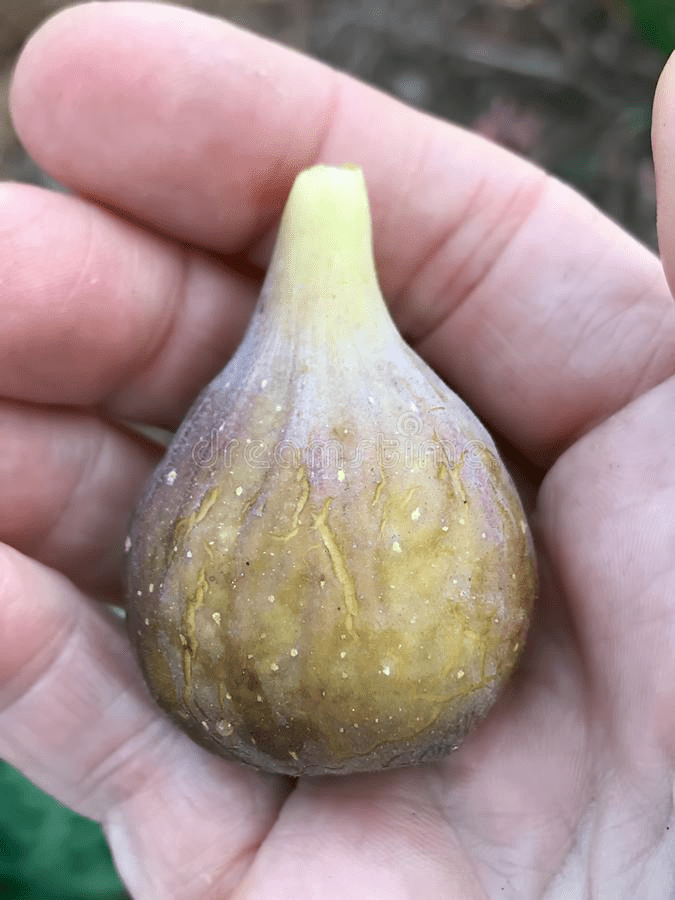“To eat figs off the tree in the very early morning, when they have been barely touched by the sun, is one of the exquisite pleasures of the Mediterranean.” ― Elizabeth David, An Omelette and a Glass of Wine
I must add, “and one of the exquisite pleasures of the Southern summer.”
Last week I picked my first home grown tomato. I dined on the first tomato sandwich of the season. Both sweet and tart…in the past week I have dined on at least one tomato sandwich daily and have included them in other dishes. One can never get enough of a good thing.
This week I picked my first fig and ate it in the early morning as suggested by Elizabeth David. The fruit was untouched by the morning sun. Covered in dew it was still cool from the nighttime temperatures. It WAS a decadently exquisite pleasure. I picked more than I could eat at one time but for some reason the picked figs I eat later don’t seem to be as decadent as the ones I eat fresh from the tree.
My trees, I have two, came from cuttings my grandmother started for me over thirty years ago. She laid a small limb down on the ground and put a rock on it. When roots formed, she snipped it loose from the tree and I brought it home to transplant. Her tree came from a cutting her mother gave her and I am still trying to get a cutting to give my daughter.
I’ve described the fig as decadent, an odd word to describe the fig considering its religious overtones. Adam and Eve covered their nudity with fig leaves after sampling the forbidden fruit of the Tree of Knowledge of Good and Evil. In western culture the forbidden fruit has been portrayed as the apple.
Considering that the fig was cultivated well before the apple, it is quite possible the apple has received a bad rap. The fig might have been the forbidden fruit Lucifer No Shoulders successfully tempted Eve with…if so, decadent might be a perfect word. The fig or the fig tree is mentioned some two hundred times in the Bible, the apple less than ten.
Okay, for the biologists in the group. A fig is technically not a fruit. It is an inverted flower…whatever that is. If it looks like fruit…tastes like fruit…
In the Quran, the fig is considered THE sacred fruit. Buddha rested under the Bodhi Tree, a fig tree whose DNA still exists after three thousand years. It was under this tree the Buddha gained enlightenment. Both the Hindus and Jains consider the fig a holy fruit. The Greeks so loved the fig they enacted laws forbidding the export of them.
As Christianity began to view nudity differently than say…the Greeks, religious paintings and statues featuring nudity were redone, some even destroyed in the attempt. Many fig leaves were added after the fact to cover he and she parts.
My figs are Brown Turkey figs. I don’t know why they are called Turkey figs but guess it might have to do with country of origin. Figs are associated with Greece and Asia Minor was awash with Greeks for a thousand years before the Turks of the Ottoman Empire descended upon them.
I’m sure the Greeks brought their fig tree cuttings with them, fig trees that came from Egypt or North Africa to Crete to Greece and then on to Turkey. These became known as Brown Turkey figs. Turkey is one of the top four fig producers worldwide.
I could be wrong but I’m glad someone brought them to Spain and from Spain to Mexico. From Mexico it was only a turkey’s hop, skip, and jump to California. Spanish Franciscan missionaries brought the fig to southern California in 1520, leading to the variety known as the Mission fig. California produces ninety-seven percent of commercial figs sold in the United States. If you like Fig Newtons, thank the Franciscans.
Ain’t cultural diffusion wonderful!
Brown Turkeys normally have two crops. The first, the crop I’m feasting on now, features large brown/yellow fruit on the outside, light red, almost pink insides. Oh, those insides, sweet and sugary, but not so sweet they set your teeth on edge. One site I was reading described the taste as “decadently sweet, providing flavors of hazelnuts and confectionaries.” I just ate one and didn’t get the taste of hazelnuts. I just describe it as good, especially covered in dew in the pre-dawn light.
The second crop provides more numerous fruits but smaller in size. Fruit that is perfect to wrap in bacon and roast in balsamic vinegar. I mean, figs and bacon are perfect together. I still go out in the pre-dawn and eat a few raw before I harvest.
My figs are a labor of love and of luck. Luck primarily. Our climate is in the foothills of the Blue Ridge and is not conducive for figs. Several times over the past thirty-five years my tree has been killed down to the roots by a late freeze or the first crop decimated by a killing frost.
Despite my worries the tree would not recover, it always has. In some ways it reminds me of my grandmother who somehow recovered for ninety-eight years. I would never describe her as decadently sweet, but she was an exquisite pleasure, and my predawn fig always reminds me of her.
For a humorous guide on how not to gather figs, you might like Ha, Ha, Ha! Stupid Man Goes Boom! https://cigarman501.com/2020/08/16/ha-ha-ha-stupid-man-goes-boom/
Don Miller’s Author’s page is found at https://www.amazon.com/Don-Miller/e/B018IT38GM?fbclid=IwAR3Sku_ycekhc9FkHrr-nv6_eKa65eciZwTRigrKR9zYwwmglFkhWSfcJ0k



